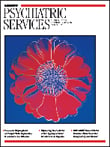Biopsychosocial Medicine: An Integrated Approach to Understanding Illness
The book Biopsychosocial Medicine is a series of papers given at a conference on the biopsychosocial model that was supported by the Novartis Foundation and One Health, a nonprofit company designed to promote a health care system based on the biopsychosocial model.
The conference organizers took on one of the major predicaments of modern medicine. The biomedical model has made great strides in helping us understand and elucidate genetic underpinnings and biological mechanisms of many diseases, yet it fails to adequately explain the connection between illness and disability, objective medical findings, the patients' experience of illness, and their quality of life. The conference was organized to explore the biopsychosocial model and discuss whether or not it brings anything more to the understanding of illness, disability, and behavior change.
Conference attendees presented a number of papers, and each presentation was followed by a discussion of equal duration to explore the questions at hand. After a history of the model's origin is given in a reprint of George Engel's landmark 1977 paper, the papers explore theoretical underpinnings and etiological issues, the social and psychological factors related to illness, and whether they are remediable or not. Further papers discuss the problem of theories that may be explanatory and the problems of confound and bias.
I particularly enjoyed the paper on and the discussion of theoretical underpinnings, which attempts to get at the core issues in the biopsychosocial model, namely the mind-body problem. Helge Malgren proposes a computer analogy—the difference between hardware and software—as one way of approaching the mind-body problem and the biopsychosocial model. The chapters "Remediable or Preventable Social Factors in the Etiology and Prognosis of Medical Disorders" and "Remediable or Preventable Psychological Factors in the Etiology and Prognosis of Medical Disorders" are thought provoking. These two chapters are a reminder of how social standing and stresses in the social environment influence health outcomes.
The chapter by Michael Von Korf, "Fear and Depression as Remediable Causes of Disability in Common Medical Conditions in Primary Care," uses back pain as a common medical condition and explores how recognizing and treating depression and addressing the fear and avoidance concerns of patients can lead to decreased disability.
The book attempts a critical look at the biopsychosocial model 28 years after Engel first put it forth, and the various papers review a large number of studies on how the model has been helpful and how it has failed. The authors make a strong case that the biomedical model does not adequately explain or intervene in a patient's illness behavior, particularly in those cases where pathology does not correlate with disability. They also provide evidence for the power of the biopsychosocial model to allow physicians to intervene and help the individual patient change his or her at-risk behaviors.
Consultation-liaison psychiatrists, now in the field of psychosomatic medicine, who work on the interface of medicine and psychiatry, and primary care physicians, who are on the front lines of changing patient behavior and evaluating the patient with unexplained symptoms, would find this book helpful. I can't help but wonder whether individuals more involved in policy making—in health care management, insurance, or government—would find the book thought provoking and enlightening because a good percentage of health care dollars are spent on unexplained medical symptoms and disability.



